Can You Put Urine in a Grey Tank
Why a German lab is growing tomatoes in urine
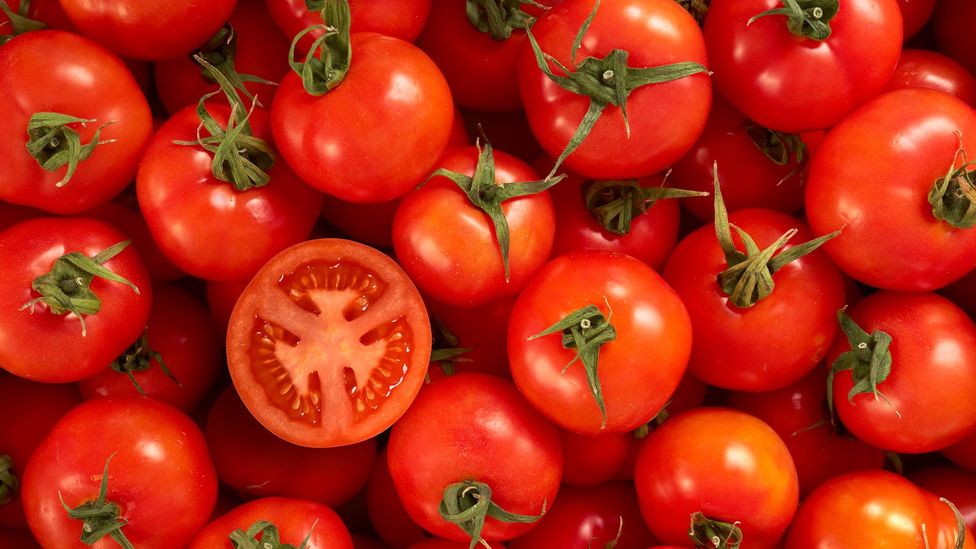
A strange experiment at the German infinite agency, DLR, may merely feed hereafter Mars expeditions.
A
A fish tank brimming with urine is the first matter yous come across when you enter Jens Hauslage's cramped role at the High german space agency, DLR, near Cologne. It sits on a shelf by his desk, surrounded by the usual academic clutter of books, charts and scientific papers.
Ascent from the centre of the tank are two transparent plastic cylindrical columns – around a metre in acme. Spreading from the pinnacle of each tube is a bushy, healthy-looking tomato found with green leaves, flowers and even a few vivid red tomatoes.
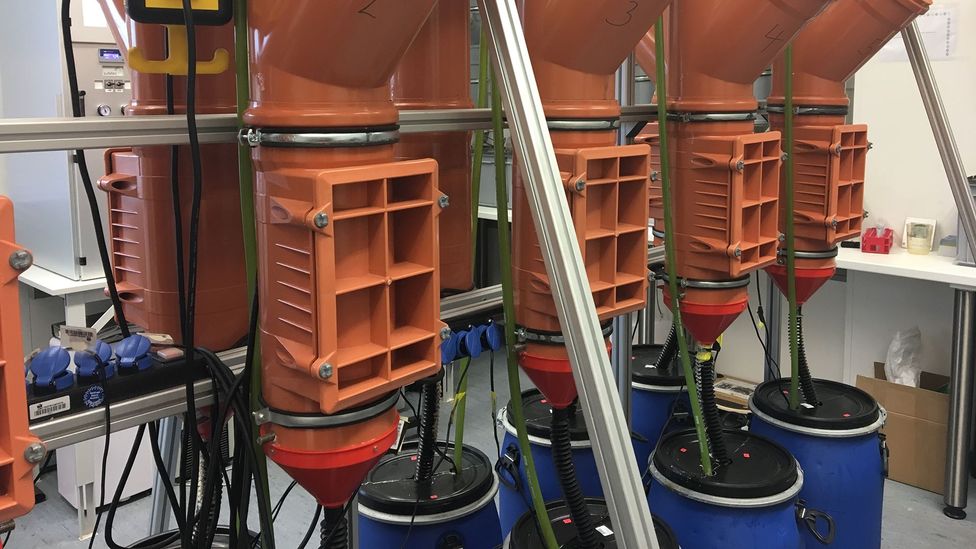
Though the laboratory is total of tanks containing urine, at that place is little aroma thank you to it being broken down by leaner (Credit: Richard Hollingham)
"Are they edible?" I ask, half expecting to be told to stay well articulate.
"Sure," says Hauslage, a institute physiologist, casually twisting one of the tomatoes from its stalk and handing over the euro-sized fruit.
I put it in my mouth. To be brutally honest, it'southward non the nicest tomato I accept ever tried: the skin is a piddling tough and the gustatory modality is slightly bitter. But it is, nevertheless, a healthy, edible tomato.
Recycled sweat
Information technology's hardly surprising the tomatoes in Hauslage's function aren't the tastiest. The plants have been specially bred to be grown in space. This experimental tank of urine, pipes and plants is the original epitome for a satellite designed to prove that tomatoes could be cultivated successfully on the Moon or Mars.
Correct now, almost all the food on the International Infinite Station (ISS) is ferried upward in cargo ships from Earth. The only exception is a few lettuce and cabbage leaves astronauts take managed to grow in a hydroponics solution. Most of the h2o on board the ISS, however, comes from astronaut urine. Liquid waste from washing, sweat and the toilet is almost totally recycled using a complex processing organization. Today'south urine is tomorrow's java.
But what if yous could utilise the useful salts in astronaut urine to grow food? If humans are ever to live for long periods on the Moon or Mars, they volition need a self-sustaining food supply. "You will demand more than poly peptide bars," says Hauslage.
"The Earth is a closed biological system with plants producing oxygen and food, and so you lot have the animals and the microbes to produce all the degradation processes in the soil," he says. "Without these systems, no sustainable long-term life-support organization will be feasible."
In his lab, there is plenty more than urine swilling around – in vats, funnels and hoses. Most of the urine is artificial – mixed so the scientists know the exact chemical limerick for their experiments – but some comes from human volunteers. The walls are lined with grey plastic drain pipes, attached to plastic boxes full of bubbling artificial urine. At the centre of the room, larger terra cotta-coloured pipes rise from plastic barrels of urine.
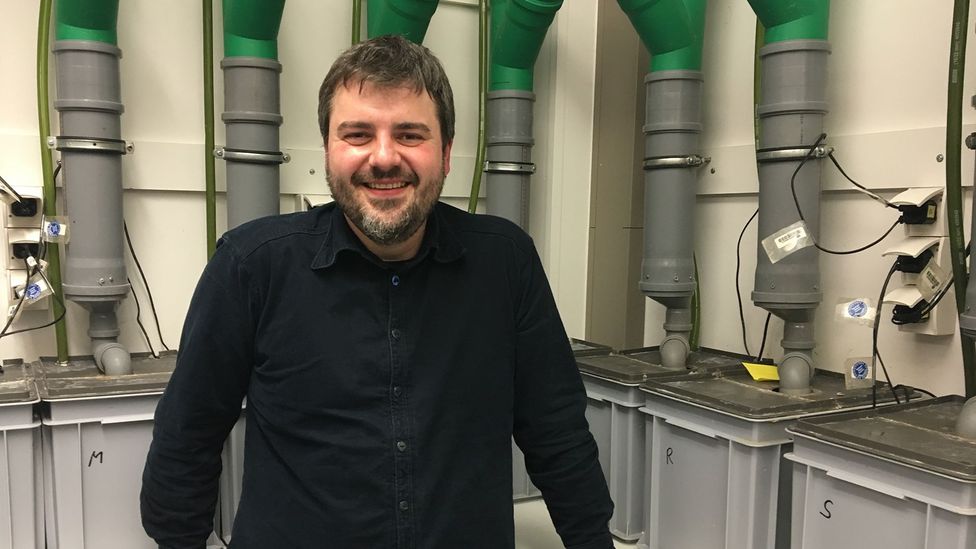
Jens Hauslage's lab is full of tanks growing tomatoes in urine - a concept that could i day feed astronauts (Credit: Richard Hollingham)
"The smaller columns tin handle the urine of one person for a mean solar day," explains Hauslage. "The big columns can handle the urine of 4 to vi people."
Each of these columns is packed with pumice rock – solidified lava that is riddled with holes – domicile to rich colonies of bacteria. These microbes feed on the urine pumped through the pipes, some bacteria convert ammonia into nitrites and others catechumen this into nitrate salts – fertiliser.
This is a controlled laboratory version of the nitrogen cycle that takes place naturally in soils and watercourses on Earth. Also as urine, this closed-loop biological organization could be used to process leftover food or leaves that drop from a plant.
Curiously, because we are in a room filled with gallons of urine, there is no smell. "The degradation of urine into carbon dioxide and ammonia is actually fast," says Hauslage, "and the bacteria within our filters are fast likewise."
Having developed the technology in the lab, the DLR science team is now taking it into orbit. Later this year, the space bureau will launch its Eu:cropis mission (the acronym stands, somewhat tortuously, for Euglena and Combined Regenerative Organic Food Production in Space), a metre-wide cylindrical satellite containing two miniature greenhouses.
Launched on a SpaceX Falcon 9 rocket, the satellite will orbit the Earth carrying tomato seeds, a tank of synthetic urine and bacterial colonies. The spacecraft will spin to simulate the gravity of the Moon for the offset greenhouse. After six months the spin rate will be increased to simulate Martian gravity when the 2d greenhouse is brought online.
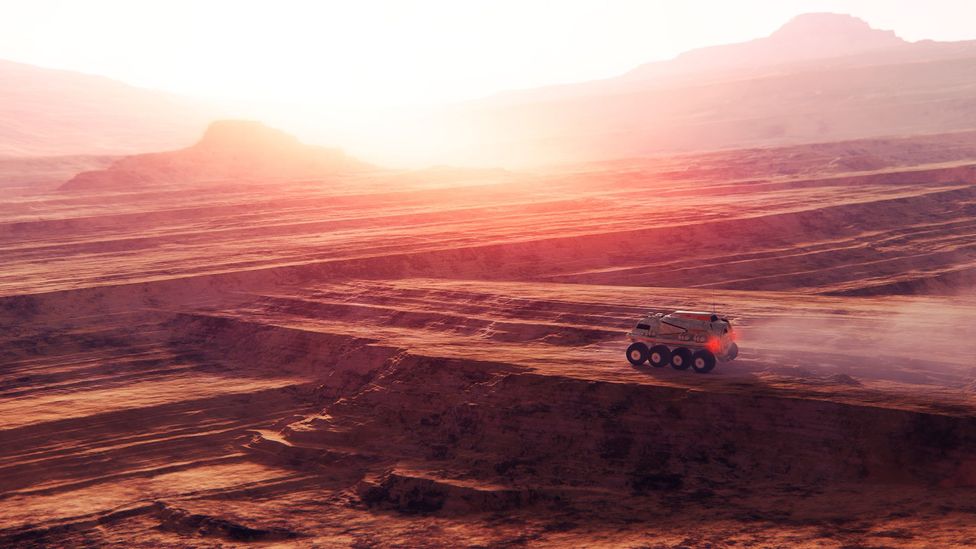
Astronauts exploring Mars volition demand more than protein bars to go along them going (Credit: iStock)
Initially oxygen will be produced by a colony of green algae – the Euglena of the acronym – although eventually the tomato plants volition produce more oxygen than carbon dioxide.
"After launch nosotros'll spin the satellite and h2o the system," says Hauslage. "The tomatoes will germinate and nosotros'll feed the system with urine to produce tomatoes."
The plants will exist advisedly monitored with an array of 16 cameras, with data sent back to Globe four times a twenty-four hours. Although this isn't the starting time time tomatoes have flown in infinite, information technology is the first satellite dedicated to growing plants in a closed organization.
If the mission proves successful, and then this could provide a mode forwards for growing plants on other worlds. Just how nearly also using the other man waste product: faeces?
In The Martian, nosotros see Matt Damon living off potatoes on Mars, cultivated in a soil of man excrement. Currently solid waste product on the ISS is bagged up and packed into supply ships to be burnt-up in the Earth's temper.
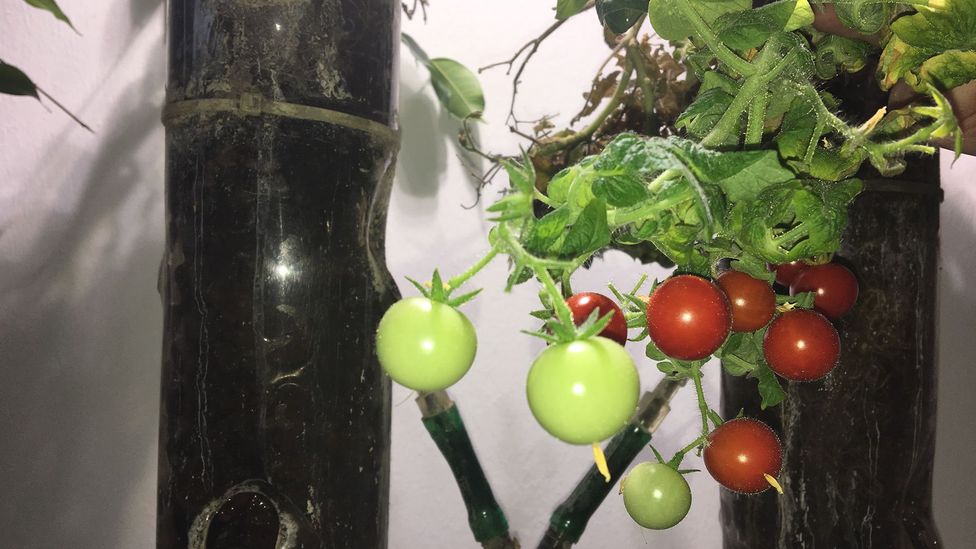
The tomatoes have a bitter taste but are perfectly edible (Credit: Richard Hollingham)
"For me as a scientist, faeces is not quite gold like urine," says Hauslage, "but information technology contains a lot of potassium which we need for a proficient fertiliser." In that location are, however, dangerous pathogens in this solid waste that would need careful handling and processing.
Withal, it is likely that nothing in a time to come colony on the Moon or Mars will be thrown away – everything volition need to be recycled. And feeding dozens of colonists on a remote world is going to testify a challenge.
"You need a lot of calories, so you have to produce a lot of potatoes, cucumbers, tomatoes then on and y'all need protein and fat," says Hauslage. The latter nutrient grouping is a particular claiming, but his team is already on the case: "We've also got an experiment producing fat with algae solution using our urine water."
Yum. Just don't look nutrient grown in space to win any Michelin Stars.
Bring together 800,000+ Hereafter fans by liking us on Facebook , or follow us on Twitter .
If you liked this story, sign upwards for the weekly bbc.com features newsletter , called "If You Just Read half dozen Things This Calendar week". A handpicked selection of stories from BBC Future, World, Culture, Capital, and Travel, delivered to your inbox every Friday.
Source: https://www.bbc.com/future/article/20170308-why-a-german-lab-is-growing-tomatoes-in-urine
0 Response to "Can You Put Urine in a Grey Tank"
Post a Comment